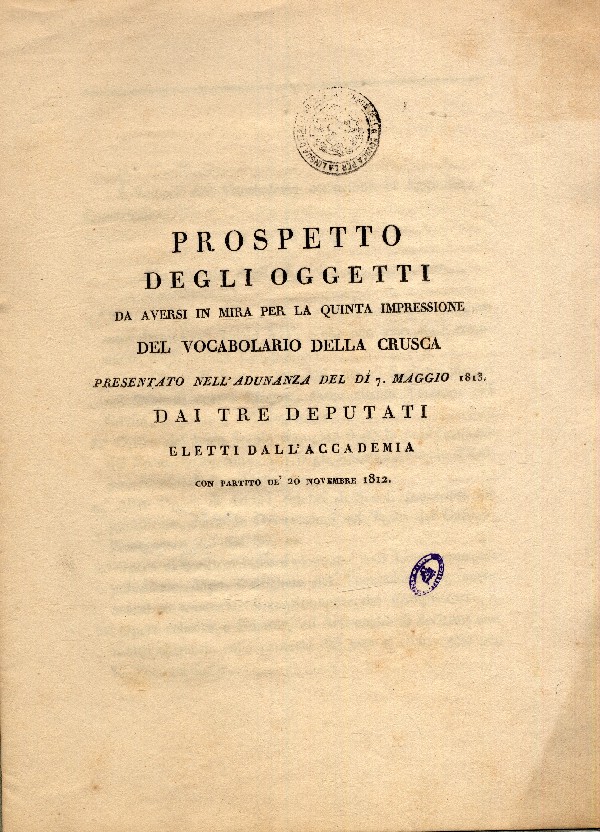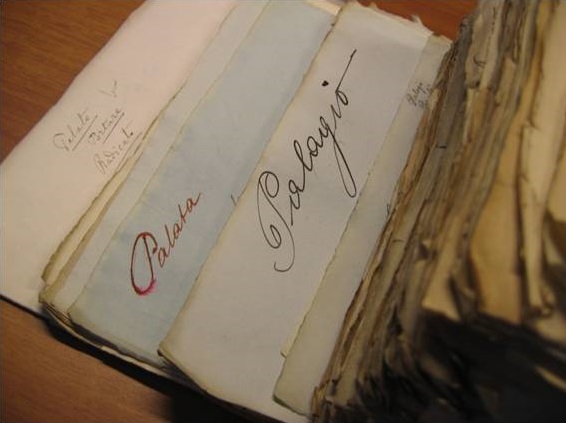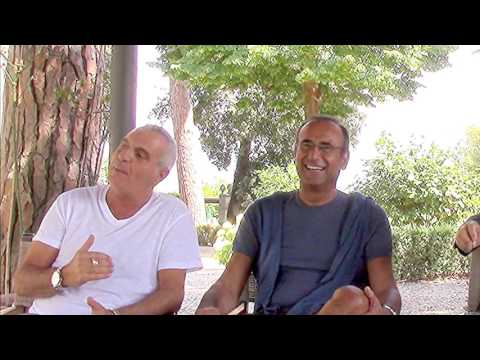The reopening of the Accademia (1811) and the fifth edition of the Vocabolario (1863-1923)
The Accademia della Crusca was refounded as an independent institution in 1811, with three main goals: the revision of the Vocabolario, the preservation of the purity of the language, and the analysis of works sent to the Accademia for the literary contest declared between 1809 and 1810.
In 1812 the new Academicians were elected, and the distinction between Resident and Correspondant Academicians was introduced; in the same year Pietro Ferroni was elected President and Lorenzo Collini Secretary; simultaneously, the project for a new edition of the Vocabolario, proposed in the past by Rosso Antonio Martini and Ildefonso Fridiani, brought under consideration.

The Academicians had also attended to the final part of the entries; the preparatory works for entries from letter P to Z are held in the Historical Archive of the Accademia.

Notices by Crusca
-
Speaker's corner
La competenza linguistica dei giovani italiani: cosa c'è al di là dei numeri?, by Rosario Coluccia.
Activities
-
The Piazza aims at the preservation and at carrying out activities for the promotion of multilingualism in the European Union; 2007-ongoing.
-
Digital integrated archive of didactic materials, iconographic and multimedia texts and documentation for the divulgation of Italian linguistic and historical-cultural heritage, with special regard to the second and third generation Italians abroad; project FIRB; 2009-2013.
-
Creation of Il Vocabolario del fiorentino contemporaneo (Dictionary of Contemporary Florentine Language): project financed by Regione Toscana and Comune di Firenze (first three-year period) and by Federico del Vecchio Bank - Banca Etruria group (second three-year period); 1994-1996/2011-2013.





